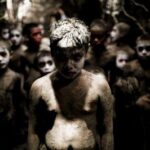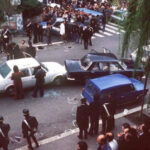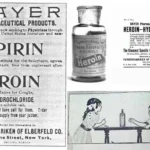December 18, 2024 Hidden history, Movies
There is a lot of talk and speculation when it comes to the environment and sustainable development.
Where, as it happens, there is never any reference to ethics.
Only saving money.
New truths about Seveso (2008)
For about half an hour, a white cloud covered four towns.
Seveso, Cesano Maderno, Desio and Meda.
It was an extremely toxic cloud containing dioxin.
This component had been used by the factory to produce Agent Orange, bought by the USA during the Vietnam War.
A total disaster.
I had already reported on this sad event many, many years ago.
Below is the article I wrote on my blog at the time.
July 17, 2008
…lest we forget : Seveso, July 10, 1976, 12:37 p.m.
At the ICMESA chemical plant, a safety valve in the A-101 reactor exploded, releasing several kilograms of dioxin in the form of a mist.
The exact amount cannot be quantified.
Some say 10-12 kilograms, others only a few.
The toxic cloud is dispersed by the wind eastward to Brianza.
The next day, Sunday, July 11, in the afternoon, two ICMESA technicians went to see the mayor of Seveso, Emilio Rocca, to inform him of what had happened at the plant.
They assured him that the situation was nothing to worry about.
The situation was under control.
Four days after the accident, animals began to die.
Chickens, birds, and rabbits are dying.
The leaves of the trees turn yellow and fall.
In a short time, the trees and all other plants die.
About 100,000 people live in the affected area.
After a few days, the first cases of poisoning appeared in the population.
On July 15, the mayor issued an emergency decree.
It is forbidden to touch the soil, vegetables and grass.
People were advised not to eat fruits and vegetables or farm animals, and not to go outdoors.
Washing thoroughly and changing clothes frequently is recommended.
The first cases of hospitalization are reported.
And ICMESA workers are refusing to go back to work.
The first articles about the incident appeared in the newspapers “Il Giorno” and “Il Corriere della Sera” only on July 17.
The fact became public.
On July 18, the Carabinieri of the Municipality of Meda began an investigation.
The Praetor ordered the closure of the factory.
The director and the deputy director of the factory were arrested for culpable homicide.
But on July 23, the prefecture had not yet decided how to deal with the emergency.
Cases of poisoning increased, especially among children.
A previously unknown disease was named.
Chloracne
Chloracne is the most prominent symptom of dioxin exposure.
It primarily affects the skin of the face and external genitalia.
With prolonged exposure, it can spread to the entire body.
It is manifested by the appearance of red spots that develop into yellowish pustular boils.
They are horrible to look at and difficult to heal, and the skin falls apart.
Exposure can seriously impair liver function.
Inhalation of the compound may cause respiratory problems.
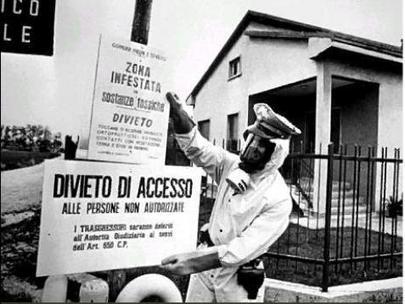
On July 23, 13 days after the accident, a cross-check of analyses performed by Italian health authorities and ICMESA’s Givaudan laboratories confirmed a significant presence of TCDD in the area most affected by the toxic cloud.
On August 10, a technical-scientific committee drew up a map of the contaminated area.
It was decided to evacuate an area of about 15 hectares around the plant.
Families living in the most affected areas were asked to leave their homes.
Nets are installed to demarcate the danger zones.
The commission divides the contaminated land into three zones based on the amount of dioxin present.
The zones are classified as “A” (highly contaminated), “B” (slightly contaminated) and “C” (buffer).
New cases of poisoning and hospitalizations are being recorded among the population of Seveso, Meda, Desio and Cesano Maderno.
There are many pregnant women among the affected population, and concern is spreading about the effects of contamination on unborn children.
However, most “experts” tend to reassure everyone and downplay the effects of dioxin.
Thousands of blood and urine tests are conducted, but no conclusions are reached.
Further testing of the soil led to the expansion of Zone A by dividing it into 7 subzones.
Meanwhile, television and newspapers continue to show footage and photos of hospitalized children with small faces covered in large red blotches.
And contaminated areas where men in sealed white overalls roam, taking soil samples and burning animal carcasses.
On October 11, after 3 months, the residents evacuated from Zone A return to their land and organize a protest by blocking the Meda-Milan highway.
They want to return to their homes and regain their lives.
The demonstrators are protesting against the plan of the province and the region to build an incinerator in Seveso.
To prevent access to the polluted area, the authorities return and decide to use the army to control the area.
Tensions and dissatisfaction with the institutions, which seemed unwilling to take adequate action, increased.
Demands were made to clean up the area, as promised, and it was suggested that the polluted soil be removed and placed in suitable locations.
In 1977, the Special Office for Seveso was set up to protect the local population.
Brief history of ICMESA
The ICMESA plant (acronym for Industrie Chimiche Meda Società Azionaria) began operations in 1947 on the territory of the municipality of Meda.
It produces pharmaceutical products and is owned by the multinational Givaudan.
It is best known as a producer of perfume essences.
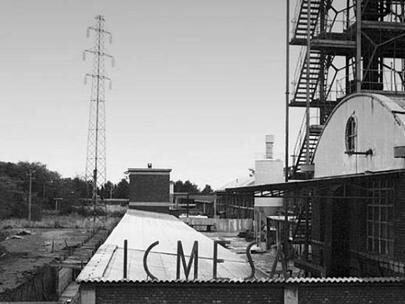
In 1963, ICMESA became the property of Hoffman-La Roche.
Soon after, protests by local residents began.
There were also numerous complaints about the plant’s impact on the local ecosystem.
The smokestacks were emitting foul-smelling gases.
The pollution of the Certosa Creek or the Taro.
However, all the complaints and allegations about the plant’s harmful effects are dismissed by the plant’s managers and no action is ever taken.
At the time of the chemical reactor explosion, the workers knew that dioxin would be produced when processing materials overheated.
It was also known that by increasing the temperature, the chemical reaction time of the products would decrease (from 5 hours to 1 hour) and more product would be obtained in less time.
The workers were aware of past accidents in other countries.
And they were aware of their disastrous effects on the environment.
The smokestack on the roof of the plant lacked a blast chiller.
The plant’s temperature control thermometers were inadequate to adequately monitor the reaction.
The accident was caused by the failure to comply with the most basic safety regulations for such a facility.
In addition, the plant was located near a built-up area.
Despite this, the perfume factory (as the locals called it) continued to operate for years.
But it hid its dangers even from the workers who worked there.
Dioxin
The term “dioxin” refers to a class of toxic compounds.
The best known, called TCDD, is formed as a byproduct in the production of trichlorophenol.
This is a substance useful in the manufacture of herbicides and bactericides.
This compound is highly toxic and can cause serious damage to the heart, kidneys, liver, stomach and lymphatic system.
TCDD is immediately deposited on soil.
It is not biodegradable or affected by microorganisms in the soil.
It enters the body through respiration and ingestion of food, especially meat, fish and dairy products.
In cases of exposure to high concentrations (as it accumulates in fats), it is subject to biological accumulation.
It causes tumors, nervous system disorders, and genetic abnormalities in laboratory mice.
Long-term effects in humans have not yet been determined.
Residents of Seveso and surrounding areas are still being used as guinea pigs to study the effects of dioxin.
So far, dioxin has not caused any human deaths.
However, it has destroyed the eco-biological balance of large areas of the territory.
This has caused the civilian death of an entire population.
It is believed that the soil is still contaminated with dioxin 30 years later.
Despite the fact that the chemical plant has been buried.
In its place is now the “oak forest”.
Later, flora and fauna were imported to the area.
This is an unforgettable event that has been commemorated with a memorial route.
The disaster caused a socio-economic destabilization of the whole area.
A great hardship for the inhabitants who had to leave their land, their houses, their work and their animals.
They gave up everything they had built or planned for their present and future.
There was no more agriculture.
At that time, many pregnant women preferred to have abortions.
Couples stopped having children.
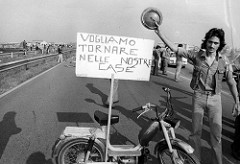
Whole families were torn from their roots.
They suffered the humiliation of feeling marginalized by the ignorance of people who did not know what dioxin was during forced relocations.
And considered it a danger to their own health.
There were 80,000 dead or slaughtered animals, 158 workers exposed to the contamination.
An unknown number of children were disfigured by chloracne.
To this day, they carry the effects of this deadly substance on their skin and suffer psychological problems that will undermine their lives forever.
At the trial, responsibility fell on the plant’s managers, who were convicted in 1983 of causing a disaster and injury.
The 200 million old lira paid by the Swiss multinational as compensation were used to clean up the most contaminated areas, such as Zone A in Seveso, where everything was demolished as irreversible.
But the material and moral damage of this man-made ecological disaster was and is incalculable.
Unfortunately, humanity is still incapable of managing the resources that nature offers us.
It does not always respect the most basic safety rules.
We abuse the limits set by nature itself.
Similar situations, causing dozens and dozens of innocent victims (with the total connivance of local institutions), can be found all over the world.
When we talk about the environment and eco-sustainable development, we just make a lot of talk and speculation.
Where, as it happens, there is never any reference to ethics.
Only saving money.




